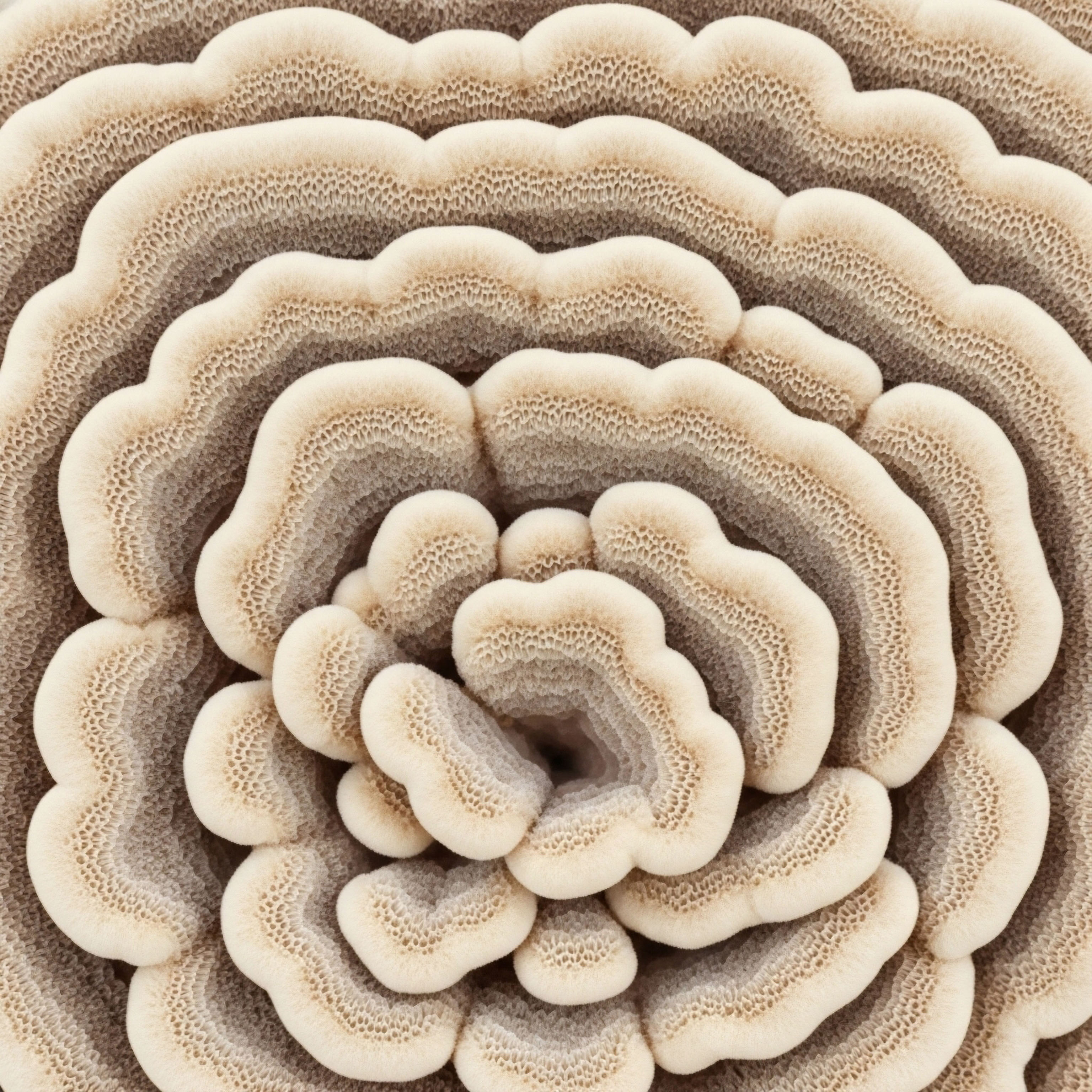

Fundamentals
Many individuals experience a subtle yet persistent shift in their well-being, a gradual dimming of vitality that often defies easy explanation. Perhaps you have noticed a decline in your usual energy levels, a diminished drive, or a sense of mental fogginess that makes daily tasks feel more arduous.
These experiences are not merely signs of aging; they can often signal an underlying imbalance within the body’s intricate communication network, particularly its hormonal systems. Understanding these internal signals marks the first step toward reclaiming a sense of robust health and functional capacity.
The human body operates through a sophisticated orchestra of chemical messengers, and among the most influential are hormones. These substances, produced by various glands, travel through the bloodstream to exert specific effects on target cells and organs.
For men, testosterone stands as a central figure in this hormonal landscape, influencing everything from muscle mass and bone density to mood, cognitive clarity, and sexual function. When testosterone levels decline, whether due to age, lifestyle factors, or other physiological reasons, the systemic impact can be considerable, manifesting as the very symptoms many individuals describe.
The production of testosterone is not a simple, isolated process; it is a finely tuned feedback loop involving the brain and the testes, known as the Hypothalamic-Pituitary-Gonadal (HPG) axis. The hypothalamus, a region in the brain, releases Gonadotropin-Releasing Hormone (GnRH).
This chemical messenger then prompts the pituitary gland, a small structure at the base of the brain, to secrete two crucial hormones ∞ Luteinizing Hormone (LH) and Follicle-Stimulating Hormone (FSH). LH travels to the testes, stimulating the Leydig cells to produce testosterone. FSH plays a role in sperm production, supporting fertility. This elegant system ensures that testosterone levels are maintained within a healthy range, constantly adjusting to the body’s needs.
When the body’s natural testosterone production falters, leading to a condition known as hypogonadism, therapeutic interventions often become a consideration. Testosterone Replacement Therapy, or TRT, involves introducing exogenous testosterone to restore physiological levels. While TRT can effectively alleviate symptoms, it also presents a unique challenge ∞ the body’s own production mechanisms can be suppressed. This suppression occurs because the brain perceives sufficient testosterone from the external source, reducing its signaling to the testes.
Restoring hormonal balance often requires a precise understanding of the body’s internal communication systems.
This is where the strategic inclusion of specific medications becomes vital. Two such agents, Gonadorelin and Anastrozole, play distinct yet complementary roles in supporting male TRT protocols. Gonadorelin, a synthetic analog of GnRH, works to maintain the activity of the HPG axis, thereby preserving the testes’ ability to produce testosterone and sperm.
Anastrozole, on the other hand, addresses a common metabolic consequence of testosterone administration ∞ its conversion into estrogen. By managing estrogen levels, Anastrozole helps mitigate potential side effects and optimizes the overall hormonal environment. Together, these medications help create a more comprehensive and physiologically aligned approach to hormonal optimization, moving beyond simple replacement to a more holistic recalibration of the endocrine system.

Understanding Hormonal Balance
Hormonal balance represents a dynamic equilibrium, not a static state. The body constantly adjusts its internal chemistry in response to internal and external cues. When this balance is disrupted, the effects can ripple across multiple physiological systems, impacting energy, mood, and physical capacity. Recognizing these subtle shifts within your own system is a powerful act of self-awareness.

The Endocrine System’s Influence
The endocrine system, a network of glands and organs, secretes hormones directly into the bloodstream. These hormones act as messengers, coordinating complex bodily functions. A disruption in one part of this system can affect others, highlighting the interconnected nature of our biological processes.


Intermediate
For men experiencing symptoms of low testosterone, a carefully constructed hormonal optimization protocol can significantly improve quality of life. The standard approach often involves the administration of exogenous testosterone, typically Testosterone Cypionate. However, a truly comprehensive strategy extends beyond mere testosterone delivery, incorporating agents that address the body’s inherent feedback mechanisms and metabolic pathways. This is where Gonadorelin and Anastrozole become integral components, each serving a specific, crucial function within the broader therapeutic design.

Gonadorelin’s Role in Endocrine Support
Gonadorelin is a synthetic version of Gonadotropin-Releasing Hormone (GnRH), the very hormone naturally produced by the hypothalamus. Its primary function in a male TRT protocol is to stimulate the pituitary gland. When administered, Gonadorelin prompts the pituitary to release its own gonadotropins ∞ Luteinizing Hormone (LH) and Follicle-Stimulating Hormone (FSH).
The physiological rationale for including Gonadorelin is compelling. When exogenous testosterone is introduced, the brain often perceives sufficient androgen levels, leading to a suppression of its own GnRH production. This, in turn, reduces LH and FSH secretion, causing the testes to shrink and cease their natural testosterone and sperm production.
This testicular atrophy and potential infertility are common concerns with traditional TRT. Gonadorelin mitigates these effects by providing a pulsatile stimulus to the pituitary, mimicking the natural GnRH rhythm. This sustained stimulation helps maintain testicular size and function, preserving endogenous testosterone production capacity and, critically, fertility.
The typical protocol involves Gonadorelin administered via subcutaneous injection, often twice weekly. This method allows for consistent delivery and absorption, supporting the continuous signaling required to keep the HPG axis active. The precise dosage is determined based on individual response and monitoring of LH, FSH, and testicular volume.
Gonadorelin helps preserve the body’s natural hormonal signaling pathways during testosterone therapy.

Anastrozole’s Role in Estrogen Management
While testosterone is the primary male sex hormone, a certain amount of estrogen is essential for men’s health, influencing bone density, lipid metabolism, and even cognitive function. However, excessive estrogen levels in men can lead to undesirable side effects. Exogenous testosterone, once administered, can be converted into estrogen through a process called aromatization, which occurs in various tissues, including fat, liver, and muscle. This conversion is catalyzed by the aromatase enzyme.
Anastrozole is an aromatase inhibitor (AI). Its mechanism of action involves blocking the aromatase enzyme, thereby reducing the conversion of testosterone into estrogen. By lowering circulating estrogen levels, Anastrozole helps prevent estrogen-related side effects that can arise during TRT. These side effects can include:
- Gynecomastia ∞ The development of breast tissue in men.
- Water retention ∞ Leading to bloating and increased blood pressure.
- Mood fluctuations ∞ Including irritability or emotional sensitivity.
- Reduced libido ∞ Paradoxically, high estrogen can sometimes suppress sexual desire.
Anastrozole is typically administered as an oral tablet, often twice weekly, with dosage adjusted based on individual estrogen levels (measured as estradiol) and symptom presentation. The goal is not to eliminate estrogen entirely, but to maintain it within an optimal physiological range, preventing both deficiency and excess.

Synergistic Action in TRT Protocols
The combined application of Gonadorelin and Anastrozole alongside testosterone cypionate creates a more balanced and physiologically sound hormonal environment. Gonadorelin works to maintain the upstream signaling to the testes, preserving their function, while Anastrozole manages the downstream metabolic conversion of testosterone to estrogen. This dual approach helps mitigate common side effects of TRT while supporting long-term endocrine health.
In some cases, additional medications like Enclomiphene may be included. Enclomiphene, a selective estrogen receptor modulator (SERM), can also stimulate LH and FSH release by blocking estrogen’s negative feedback at the pituitary, offering another avenue for supporting endogenous testosterone production and fertility, particularly in men seeking to discontinue TRT or conceive.
| Medication | Primary Mechanism | Primary Benefit in TRT | Administration |
|---|---|---|---|
| Gonadorelin | GnRH analog; stimulates pituitary LH/FSH release | Preserves testicular function and fertility | Subcutaneous injection (e.g. 2x/week) |
| Anastrozole | Aromatase inhibitor; blocks testosterone-to-estrogen conversion | Manages estrogen levels; prevents estrogenic side effects | Oral tablet (e.g. 2x/week) |


Academic
The intricate interplay of the endocrine system necessitates a sophisticated understanding when optimizing hormonal health, particularly within the context of male testosterone replacement protocols. The integration of Gonadorelin and Anastrozole into TRT regimens represents a move beyond simplistic hormone supplementation, aiming for a more physiological recalibration of the HPG axis and peripheral hormone metabolism. This approach acknowledges the complex feedback loops that govern endogenous hormone production and the metabolic fate of exogenous androgens.

The HPG Axis and Exogenous Androgen Suppression
The administration of exogenous testosterone, while effective in alleviating symptoms of hypogonadism, inherently suppresses the HPG axis. This suppression occurs through negative feedback mechanisms at both the hypothalamus and pituitary levels. Elevated circulating testosterone levels signal to the hypothalamus to reduce GnRH pulsatility and to the pituitary to decrease LH and FSH secretion. The consequence is a reduction in Leydig cell stimulation and spermatogenesis, leading to testicular atrophy and impaired fertility. This phenomenon is well-documented in clinical endocrinology.
Gonadorelin, as a synthetic GnRH analog, provides an exogenous pulsatile stimulus to the pituitary gland, thereby overriding the negative feedback exerted by exogenous testosterone. This continuous, albeit externally driven, stimulation of LH and FSH secretion maintains the functional integrity of the testes.
Research indicates that maintaining testicular volume and spermatogenic capacity is a significant benefit of this co-administration. Studies have shown that men on TRT combined with GnRH analogs exhibit significantly higher testicular volumes and sperm counts compared to those on testosterone monotherapy. The precise pulsatile administration of Gonadorelin is critical, as continuous, non-pulsatile GnRH administration can paradoxically lead to desensitization and suppression of the pituitary, a principle utilized in chemical castration.
Optimizing male hormonal health requires a deep understanding of the body’s intricate feedback systems.

Estrogen Dynamics and Aromatase Inhibition
Testosterone’s conversion to estradiol (E2) via the aromatase enzyme is a physiological process essential for male health, influencing bone density, cardiovascular function, and neurocognitive processes. However, supraphysiological testosterone levels, often achieved with standard TRT dosages, can lead to excessive aromatization and elevated E2 levels. High E2 in men is associated with adverse effects such as gynecomastia, fluid retention, increased cardiovascular risk markers, and potentially mood disturbances.
Anastrozole, a non-steroidal aromatase inhibitor, competitively binds to the aromatase enzyme, preventing the conversion of androgens to estrogens. Its inclusion in TRT protocols is a strategic intervention to maintain E2 within an optimal physiological range, typically aiming for levels that are neither too low (which can lead to bone density issues and sexual dysfunction) nor too high.
Clinical data supports the efficacy of Anastrozole in reducing E2 levels in men on TRT, thereby mitigating estrogen-related side effects. The dosage of Anastrozole must be carefully titrated based on serum estradiol levels, typically measured using a sensitive assay, and clinical symptom resolution. Overtreatment with aromatase inhibitors can lead to critically low E2 levels, which can paradoxically cause symptoms similar to low testosterone, including joint pain, decreased libido, and mood changes.

The Interconnectedness of Hormonal Axes
The HPG axis does not operate in isolation. It is deeply interconnected with other endocrine axes, including the hypothalamic-pituitary-adrenal (HPA) axis (stress response) and the hypothalamic-pituitary-thyroid (HPT) axis (metabolism). Chronic stress, for example, can influence GnRH pulsatility, and thyroid dysfunction can impact androgen metabolism.
A comprehensive approach to male hormonal optimization considers these broader systemic influences. The goal is not merely to normalize a single hormone level, but to restore a harmonious endocrine environment that supports overall metabolic function and well-being.
The integration of Gonadorelin and Anastrozole into male TRT protocols reflects a sophisticated understanding of endocrine physiology. This combined strategy addresses both the preservation of endogenous testicular function and the meticulous management of estrogenic metabolites, offering a more complete and physiologically aligned path to hormonal balance and vitality.
| Hormone/Marker | Relevance in TRT | Optimal Range (General Guidance) |
|---|---|---|
| Total Testosterone | Primary measure of androgen status; target for TRT | 400-800 ng/dL |
| Free Testosterone | Biologically active testosterone; reflects tissue availability | 100-250 pg/mL |
| Estradiol (E2) | Monitored for aromatization; managed by Anastrozole | 20-30 pg/mL (sensitive assay) |
| Luteinizing Hormone (LH) | Pituitary signal to testes; maintained by Gonadorelin | 2-8 IU/L (on Gonadorelin) |
| Follicle-Stimulating Hormone (FSH) | Pituitary signal for spermatogenesis; maintained by Gonadorelin | 1-10 IU/L (on Gonadorelin) |
| Sex Hormone Binding Globulin (SHBG) | Influences free testosterone; can be affected by TRT | 15-50 nmol/L |

How Does Gonadorelin Preserve Male Fertility during TRT?
Gonadorelin’s mechanism of action directly addresses the suppression of spermatogenesis induced by exogenous testosterone. By providing a pulsatile GnRH signal, it ensures the continued release of FSH from the pituitary. FSH is a critical hormone for initiating and maintaining sperm production within the seminiferous tubules of the testes.
Without this FSH stimulation, the germ cells responsible for spermatogenesis would cease their activity, leading to azoospermia or severe oligozoospermia. The ongoing LH stimulation, also driven by Gonadorelin, helps maintain Leydig cell function, which contributes to testicular health and volume, even if exogenous testosterone is the primary source of circulating androgen.
This targeted support for the testicular environment is a key differentiator of Gonadorelin-inclusive TRT protocols, offering a pathway for men to optimize their hormonal health without compromising their reproductive potential.

References
- Bhasin, Shalender, et al. “Testosterone Therapy in Men With Hypogonadism ∞ An Endocrine Society Clinical Practice Guideline.” Journal of Clinical Endocrinology & Metabolism, vol. 103, no. 5, 2018, pp. 1715-1744.
- Liu, Peter Y. et al. “Androgen Replacement Therapy and Spermatogenesis.” Clinical Endocrinology, vol. 60, no. 4, 2004, pp. 411-417.
- Finkelstein, Joel S. et al. “Gonadal Steroids and Body Composition, Strength, and Sexual Function in Men.” New England Journal of Medicine, vol. 369, no. 11, 2013, pp. 1011-1022.
- Mauras, Nelly, et al. “Estrogen Suppression in Males with Aromatase Inhibitors ∞ Clinical Implications.” Journal of Clinical Endocrinology & Metabolism, vol. 91, no. 10, 2006, pp. 3790-3796.
- Nieschlag, Eberhard, and Hermann M. Behre. Andrology ∞ Male Reproductive Health and Dysfunction. 3rd ed. Springer, 2010.
- Handelsman, David J. “Testosterone ∞ From Physiology to Pharmacotherapy.” European Journal of Endocrinology, vol. 170, no. 2, 2014, pp. R1-R11.

Reflection
Understanding the intricate dance of hormones within your body is a powerful act of self-discovery. The journey toward hormonal balance is deeply personal, reflecting your unique biological blueprint and lived experiences. The knowledge presented here about Gonadorelin and Anastrozole in male TRT offers a glimpse into the precision available in modern hormonal optimization.
This information serves as a foundation, a starting point for deeper consideration of your own health trajectory. It prompts you to consider not just the symptoms you experience, but the underlying systems that govern your vitality. Reclaiming optimal function often involves a collaborative effort, combining scientific insight with a careful listening to your body’s signals.
What steps might you take to explore your own hormonal landscape? How might a deeper understanding of these biological mechanisms empower your personal health decisions? The path to renewed well-being is an ongoing process of learning and adaptation, guided by both clinical evidence and your individual needs.



